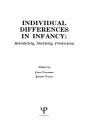This book presents cutting-edge research on adult attachment together with a complete overview of the Adult Attachment Projective Picture System (AAP), the authors’ validated developmental assessment. In addition to identifying attachment classification groups, the AAP yields important information about dimensions–including defensive processes–not evaluated by other available measures. Detailed case illustrations show what the AAP looks like ‘in action’ and what it reveals about individuals’ early experiences, sense of self, and capacity to engage in close, protective relationships. The AAP can be used in clinical or research settings; the concluding chapter discusses promising applications to studying the neurobiology of attachment.
Inhoudsopgave
I. Background
1. Narrative versus Non-Narrative Assessment of Adult Attachment
2. Defining Attachment Stories as Representational Precipitates
II. Development, Validation, and Coding of the AAP
3. The Development and Validation of the AAP
4. The Attachment Self: The AAP Attachment Content Coding Dimensions
5. Defensive Processes in the AAP
III. Using the AAP
6. Secure Attachment
7. Dismissing Attachment
8. Preoccupied Attachment
9. Dysregulated Segregated Systems: Unresolved Attachment, Failed Mourning, and Preoccupation with Suffering
10. Using the AAP in Neurobiology Research,
Anna Buchheim and
Carol George
Over de auteur
Malcolm L. West, Ph D, until his death in 2020, was retired Professor of Psychiatry at the University of Calgary in Alberta, Canada. Dr. West worked as a clinician and researcher throughout his career. His research used attachment theory in clinical research, including studies of cardiac rehabilitation patients, depression in women, and suicidal behavior in adolescents. In addition to the Adult Attachment Projective Picture System, Dr. West developed self-report assessments of attachment in adults and adolescents.











